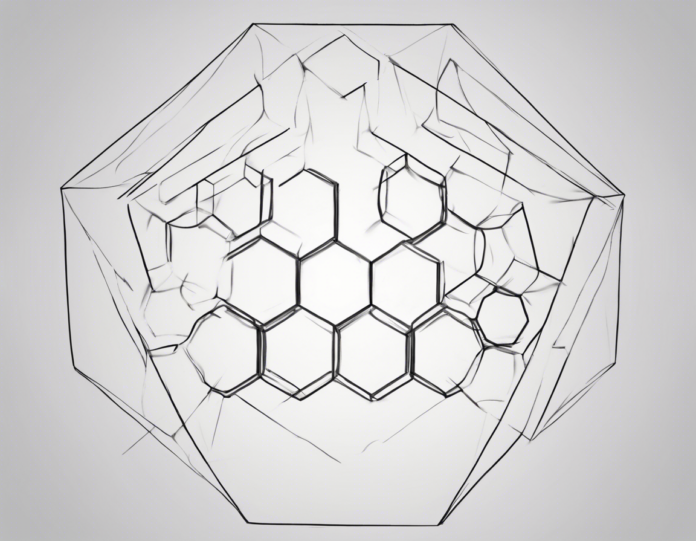Introduction
Drawing a hexagon may seem like a daunting task to some, but with the right guidance and techniques, anyone can create this six-sided polygon with ease. In this comprehensive guide, we will walk you through the step-by-step process of drawing a perfect hexagon, whether you’re using a ruler and compass or simply freehanding it. Additionally, we will explore tips and tricks to ensure precision and symmetry in your hexagon drawing. Let’s dive in!
Materials Needed
Before we begin, gather the following materials:
- Graph paper
- Pencil
- Ruler
- Compass (optional)
Step 1: Understand the Basics
A hexagon is a polygon with six equal sides and six angles. Each interior angle of a regular hexagon measures 120 degrees, and the sum of all interior angles is 720 degrees. Keeping these properties in mind will help you create an accurate hexagon.
Step 2: Using a Ruler and Compass
If you prefer a precise method, start by drawing a circle with the desired radius using a compass. Ensure that the circle’s diameter matches the length of the hexagon’s side. Next, use the ruler to draw a horizontal line that passes through the circle’s center. Mark the points where the line intersects the circle as points A and B.
Step 3: Completing the Hexagon
With points A and B marked, place the ruler’s edge on point A and draw a line from point A to the circle’s top. Repeat this step from point B to complete two sides of the hexagon. Continue this process to draw all six sides, ensuring each line meets at the corners smoothly to form a regular hexagon.
Step 4: Freehand Method
If you prefer a more organic approach, start by drawing a single straight line of the desired length with a pencil. Next, angle the ruler to create another line connected to the first, forming a triangle. Repeat this process to create additional triangles around the central one, adjusting the angles until all six sides meet and form a hexagon shape.
Step 5: Refine and Finalize
Once you have the basic shape of a hexagon, go over the lines to ensure they are straight and equal in length. Use an eraser to remove any unnecessary markings or mistakes. You can also darken the final lines for clarity and precision.
Tips for Drawing a Perfect Hexagon
-
Practice makes perfect: Don’t be discouraged if your first attempt is not flawless. Like any skill, drawing hexagons improves with practice.
-
Use guidelines: Lightly sketching guiding lines before finalizing the shape can help maintain symmetry and proportion.
-
Take your time: Rushing through the drawing process can lead to inaccuracies. Take your time to ensure each side is measured and drawn correctly.
-
Experiment with different techniques: Whether using a compass or freehanding it, try various methods to find what works best for you.
FAQs
-
Q: Can I draw a hexagon without a ruler or compass?
A: Yes, you can freehand a hexagon by sketching six equal sides and adjusting the angles until they meet correctly. -
Q: What is the sum of interior angles in a hexagon?
A: The sum of interior angles in a hexagon is 720 degrees. -
Q: How do I ensure all six sides are equal in length?
A: Using a ruler or measuring tool can help you maintain equal side lengths while drawing a hexagon. -
Q: Can I draw a hexagon in different sizes?
A: Yes, by adjusting the length of the sides, you can draw hexagons of varying sizes. -
Q: Are there applications where hexagons are commonly used?
A: Hexagons are frequently used in geometry, architecture, design, and even in nature (e.g., honeycomb structures).
By following this step-by-step guide and incorporating the tips provided, you can confidently draw a perfect hexagon with precision and accuracy. Remember, practice and patience are key to mastering any skill, including geometric drawing.

